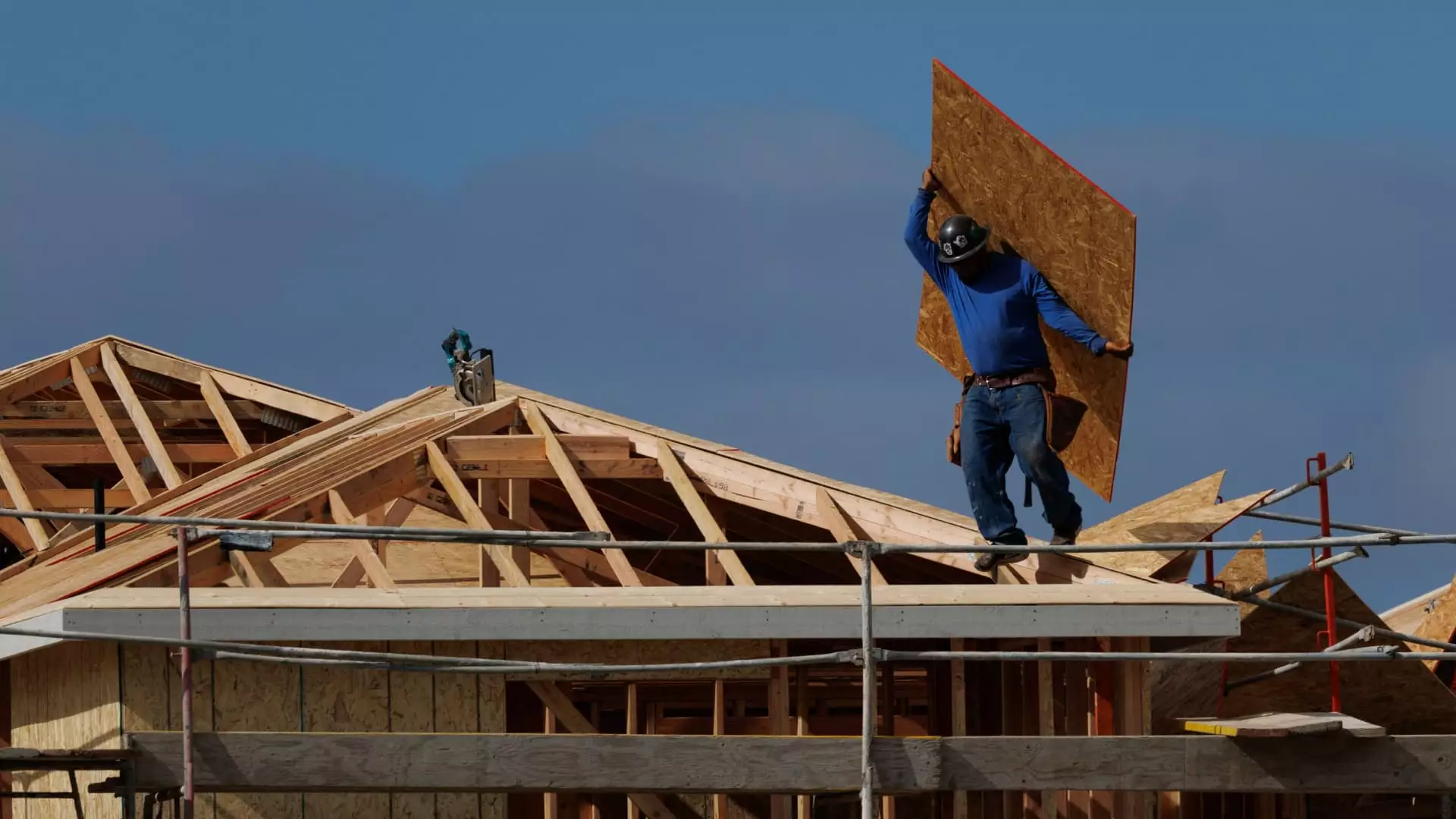The American housing market is teetering on the edge of a precipice, with builder confidence plunging into a state of prolonged pessimism. Despite a marginal uptick in July, the overall sentiment remains deeply negative, reflecting a broader economic uncertainty that cannot be ignored. The fact that the NAHB index continues to linger below the neutral threshold of 50 for over a year signals a structural weakening that politicians and industry leaders alike are slow to acknowledge. While small gains in the index might seem encouraging, they are essentially superficial, masking the underlying malaise that stubbornly persists within the sector.
The recent increase in builder confidence—just one point—can be attributed to policies like the budget act, which temporarily alleviated some tax burdens. However, this relief is superficial. It distracts from the harsher realities—elevated mortgage rates, declining buyer interest, and shrinking prospects for homebuilders. The fact that these issues still dominate the landscape underscores the resilience of systemic economic challenges that threaten to deepen the crisis.
Price Cuts as a Symptom of Deeper Economic Struggles
One of the clearest signals of a market in distress is the surge in price reductions—38% of builders resorted to slashing home prices in July, a figure that surpasses previous months since NAHB began tracking the phenomenon. This trend is not merely a strategic move but a reflection of dwindling demand; builders are desperate to move inventory, even at the cost of eroding profit margins. The average reduction of 5% demonstrates their willingness to sustain losses temporarily but also foreshadows sustained hardship ahead.
These price cuts, while necessary for short-term sales, threaten the financial stability of homebuilders. Many are resorting to mortgage rate buydowns to attract buyers, but this tactic merely shifts the problem rather than solving it. It is akin to applying a band-aid on a deep wound—the core issue remains unaddressed. As analysts warn, increasing these rate buydowns without addressing affordability and demand will further squeeze margins, ultimately pushing many builders into financial peril.
The Illusion of Market Resilience and the Harsh Reality of Declining Demand
Although the index’s components show some minor improvements—such as slight increases in current sales conditions and sales expectations—these figures are misleading. Buyer traffic hit its worst levels since late 2022, with only 20% of potential buyers visiting model homes. This stark decline indicates a collapsing demand that cannot be sustained by temporary measures like rate buydowns or modest price reductions.
The reality is that the single-family housing market is destined for a significant contraction in 2025. With permits down 6% year-to-date and builder traffic at multi-year lows, the sector’s decline isn’t a temporary dip but part of a long-term downward trajectory. The core issue remains affordability—interest rates are high, wages haven’t kept pace, and consumer confidence continues to erode. These factors combine to create a perfect storm that no government stimulus or short-term policy can rescue.
The Regional Disparity and the Broader Economic Implications
While regional differences exist, with the Northeast relatively stable and other regions experiencing declines, the overarching trend is uniformly bleak. This geographical disparity does not change the fundamental economic conditions—high interest rates, inflation, and stagnant wages. The weakening sentiment in the South and West, which are traditionally more dynamic markets, signals that the entire housing ecosystem faces systemic risks.
From a center-right perspective, these issues reflect the consequences of misguided policies that have distorted economic fundamentals—overreliance on low-interest-rate environments, excessive government intervention, and an inability to adapt quickly to rising interest rates. The market is signaling that the era of easy credit and rapid home price appreciation is over, replaced by a reality where affordability and demand are permanently altered.
In this context, the impending decline isn’t just a market correction but an inevitable correction driven by structural economic shifts. Ignoring these signals and doubling down on ineffective policies will only deepen the crisis, leading to more defaults, bankruptcies, and economic distress in the coming years. Without structural reforms focused on restoring affordability and sensible fiscal policy, the housing sector’s decline will accelerate, impacting millions of potential homeowners and the broader economy alike.


Leave a Reply